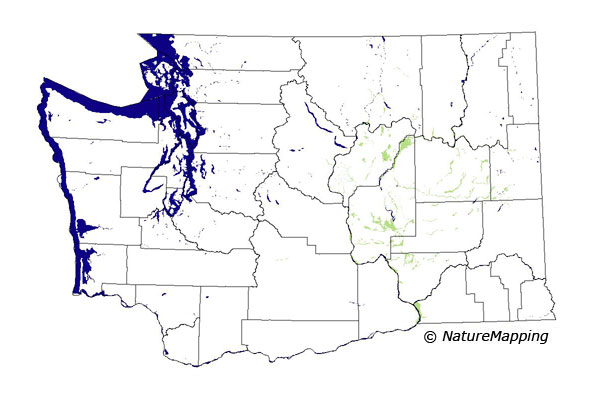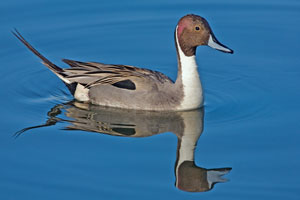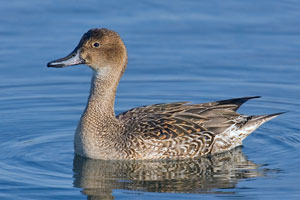


Pintail or Northern Pintail (Anas acuta) What they look like: The Northern Pintail has a very skinny long neck, a small head and pointed tail. The male has a dark brown head with a white line running up the back of the neck from the breast. The bill is gray with a black stripe down middle. 
The female has a tan head and neck. The female's feathers are spotted tan and she has a dark brown back and body. The feathers on the females belly are lighter. Her bill is gray-blue with small black spots.
How big are they? Where they live: The Northern Pintail migrates. It spends winters from as far south as Panama and flies as far north as Alaska and the Great Lakes. The Pintail's habitat is in marshes, lakes, ponds and sheltered coasts. It winters on bodies of water near agricultural land. What they eat: The diet of the Northern Pintail is plants that grow in the water, seeds, grass, small water animals, and insects. In the winter, the Northern Pintail often feeds in grain fields. Their long necks enable them to reach deeper than other ducks for food. 
Did You Know?
Animal silhouettes available to purchase » Photo Credit: Natures Pics Home | About Us | How to Participate | Biodiversity Modules | Projects | Maps | News | Resources |